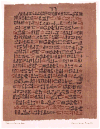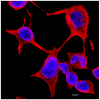Colchicine: an ancient drug with novel applications
- PMID: 28832953
- PMCID: PMC5812812
- DOI: 10.1111/bjd.15896
Colchicine: an ancient drug with novel applications
Abstract
Colchicine is a treatment for gout that has been used for more than a millennium. It is the treatment of choice for familial Mediterranean fever and its associated complication, amyloidosis. The 2009 U.S. Food and Drug Administration approval of colchicine as a new drug had research consequences. Recent investigations with large cohorts of patients with gout who have been taking colchicine for years have demonstrated novel applications within oncology, immunology, cardiology and dermatology. Some emerging dermatological uses include the treatment of epidermolysis bullosa acquisita, leucocytoclastic vasculitis, aphthous stomatitis and others. In this work we relate the history and the new horizon of this ancient medicine.
© 2017 British Association of Dermatologists.
Conflict of interest statement
There are no conflicts of interest to disclose.
Figures




References
-
- Roubille F, Kritikou E, Busseuil D, et al. Colchicine: an old wine in a new bottle? Antiinflamm Antiallergy Agents Med Chem. 2013;12:14–23. - PubMed
-
- Komlodi-Pasztor E, Sackett DL, Fojo AT. Inhibitors targeting mitosis: tales of how great drugs against a promising target were brought down by a flawed rationale. Clin Cancer Res. 2012;18:51–63. - PubMed
-
- Dalbeth N, Lauterio TJ, Wolfe HR. Mechanism of action of colchicine in the treatment of gout. Clin Ther. 2014;36:1465–79. - PubMed
Publication types
MeSH terms
Substances
Supplementary concepts
Grants and funding
LinkOut - more resources
Full Text Sources
Other Literature Sources
Medical

